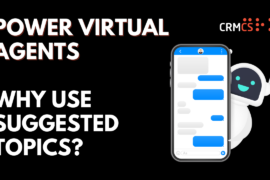
Let’s explore the Top 5 Dynamics Marketing Features and see how they can help you to get the most out of your CRM!
1. Insights
2. Customer Journey
3. Marketing Emails
4. Marketing Forms and Pages
5. Segments1. Insights
Being able to see the metrics you care about is really important. Dynamics for Marketing comes as standard with in depth reporting on the features you need, or ‘Insights’. Insights are available on customer journeys, marketing emails, marketing forms, marketing pages, contacts. Each entity offers different metrics, but you will be able to see important metrics such as emails sent, delivered, opened. Web interactions, email interactions, unsubscribes. Any metric required for reporting will be available in Insights.
Here is an example of a Contacts Insights. You can see every interaction on the timeline; the emails people have interacted with, web interactions and, so much more invaluable information. The Sales team can also look at any contact instantly identify what’s happening. The companies who benefit most are those which can read and manipulate the data to give them the most valuable Insights. We’re able to help you get the Insights you need to get the best out of Dynamics.

2. Customer Journey
Automation is key and Dynamics for Marketing’s Customer Journey allows you to control multiple facets of every Contact’s customer journey. The simple drag and drop interface makes creating Journeys a walk-in-the-park. You can effortlessly use Dynamics powerful workflow functionality to add steps within the customer journey.
Here’s a typical customer journey that sends an email to a segment of contacts. If the contact has clicked a specific link, it waits 2 days then creates an activity for the contact owner to call them. Imagine how powerful that could be for your business. Customer Journey is the most complex part of Dynamics for Marketing which can be a little overwhelming at first. There’s a wealth of good features here and often a little help from a specialist can help in setting up the Customer Journey so you can tap into these features better.

3. Marketing Emails
Dynamics for Marketing gives you the ability to produce excellent promotional emails. It removes the need for designers to construct marketing emails and uses drag and drop functionality to allow you to quickly deliver professional-looking marketing communications. Data can be mapped to emails and pulling any field from a Contact entity is really easy. Here you can see part of an email that one of our clients created using the included drag and drop functionality. If you’re new to creating your own marketing emails then you can always get help from a consultancy to improve your email campaigns

4. Marketing Forms & Pages
Dynamics for Marketing also gives you the functionality to create webpages with next to no help from web designers/developers. Through the use of Microsoft portals you can create a marketing form and host it on a marketing page via a Microsoft portal. Here is an example of marketing form which uses fields onto the form which have been pulled from Contacts.
![clip_image002[8] clip_image002[8]](https://license.citruslime.com/cs/blogs/crmcs/clip_image0028_thumb_1BCDB0DC.png)
Placing the form in a simple ‘live’ marketing page is easy as you can see below. These fields will update/create contacts in Dynamics based off the email address. This is really useful for letting people update their own information, signing up for newsletters, etc.
To really get the best out of Marketing Forms and Pages you should be looking to use them within your own website. Alternatively, the Dynamics for Marketing portal can be used for developing a new marketing. Naturally, you need to be able to identify the optimal workflow for using Marketing Forms and Pages, so this is where a little extra help always comes in handy.

5. Segments
Dynamics for Marketing gives users full access to their database. Segments allows companies to group their contacts in whatever way they desire. If you’re familiar with Dynamics, then segments work in a similar fashion to an advanced find. As it’s directly plugged into Dynamics you can specify whatever conditions you like. Segments can be quickly merged to save more time. The illustration below shows how you can search for clients that live in a particular location, Manchester in this example, plus who are decision makers and who have a mobile phone and email address. Doing this enables you to tailor individual emails to decision makers, mapping their mobile phone to the email.

Segments can also be used as suppression lists. If you want to target your entire database and exclude a particular group, you can create a segment for this and when you’re creating a customer journey you simply add this segment to the suppression lookup – excluding the segment from your target list.

Dynamics 365 for Marketing gives full control to marketers, removing the dependency (and cost) of designers, web developers and analysts. . It can be quite hard to get to grips with how each entity relates to each other. As soon as you develop a strong understanding of the relationships it makes it easier to manage targeting of accounts or sales leads.
The five key features discussed represent just a fraction of the functionalities possessed by Dynamics for Marketing. To find out more, or to see how CRMCS can help you unlock the power of Dynamics for Marketing, visit CRMCS or Contact Us
The seamless integration with Dynamics makes it the perfect solution for existing Dynamics users but the functionality and overall product should also tempt none Dynamics users to think about the CRM they are using.
Next Article: Explore how Dynamics 365 for Marketing Reports into Microsoft Teams





